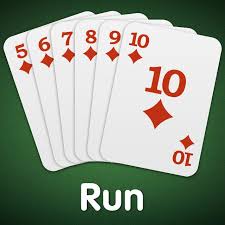Types Of Cards In Rummy, Rummy is a popular card game that combines skill and strategy, requiring players to form sets and sequences with their cards. Understanding the different types of cards used in Rummy is crucial for mastering the game. This article provides a comprehensive guide to the types of cards you’ll encounter in Rummy, including their roles and characteristics.
1. Standard Deck Cards
Rummy is typically played with a standard deck of 52 cards. This deck consists of:
- Four Suits: Each deck contains four suits: Hearts, Diamonds, Clubs, and Spades.
- Hearts (♥)
- Diamonds (♦)
- Clubs (♣)
- Spades (♠)
- Ranks: Each suit includes thirteen ranks:
- Numbers: 2 through 10
- Face Cards: Jack (J), Queen (Q), and King (K)
- Ace (A): Typically, the Ace can be used as either the lowest card (following the King) or the highest card (preceding the 2), depending on the specific rules of the Rummy variant being played.
2. Wild Cards
Wild cards are special cards that can be used as substitutes for any other card in forming sets or sequences. The use of wild cards adds a layer of strategy and flexibility to the game.
- Jokers: In most Rummy variations, Jokers are the primary wild cards. Each deck generally includes two Joker cards, which can be used to represent any card value in a set or sequence.
- Printed Jokers: Some Rummy versions use printed wild cards (also known as “Joker Cards”) from the deck itself. These are predetermined cards that act as wild cards throughout the game. For example, in some versions, any card from the 2s of each suit could be designated as a wild card.
3. Specific Rummy Deck Variants
Different Rummy variations may have specific rules about the types of cards used or additional cards in play. Here are a few examples:
- Indian Rummy: Often played with two decks of 52 cards plus two Jokers, making a total of 106 cards. The additional Jokers provide more opportunities for wild cards.
- Gin Rummy: Typically played with a single deck of 52 cards. This variant uses the standard deck cards without additional Jokers.
- Kalooki (Kaluki): This variation often uses two decks of cards plus Jokers, similar to Indian Rummy, but with specific rules for the use of wild cards and melding.
4. Role of Cards in Rummy
Understanding the role of each type of card in Rummy is key to effective gameplay:
- Number Cards (2-10): These are the most common cards used to form sequences and sets. For example, a sequence can be formed with 4-5-6 of the same suit, while sets can be created with three or four cards of the same rank but different suits.
- Face Cards (J, Q, K): These are valuable for creating sets. For example, three Jacks of different suits form a valid set. Their high value can also be advantageous in scoring.
- Ace: The Ace is versatile. It can be used to complete a sequence with cards like A-2-3 or as a high card, following K-A-2. Its flexibility makes it a powerful card in gameplay.
- Jokers (Wild Cards): Jokers add significant flexibility, allowing players to complete sets and sequences more easily. They can substitute for any card, making them highly valuable.
5. Strategy Tips
- Use Jokers Wisely: Employ Jokers strategically to complete important sets or sequences. Avoid using them too early unless necessary.
- Observe Opponents: Pay attention to the cards discarded by opponents to anticipate their hand and adjust your strategy accordingly.
- Prioritize Sequences: Forming sequences is often a priority because they are more challenging to block than sets.
- Manage Card Values: Be mindful of the value of cards in your hand. Lowering the total value of your unmelded cards can be advantageous if an opponent declares.
Conclusion
Understanding the different types of cards used in Rummy and their roles can significantly enhance your gameplay and strategic decisions. From the standard deck cards to wild cards like Jokers, each type plays a crucial role in forming sets and sequences. Mastering the use of these cards and adapting to various Rummy variants will improve your skills and increase your chances of success. Whether you’re a novice or an experienced player, having a solid grasp of the card types and their functions is essential for excelling in this classic card game.




